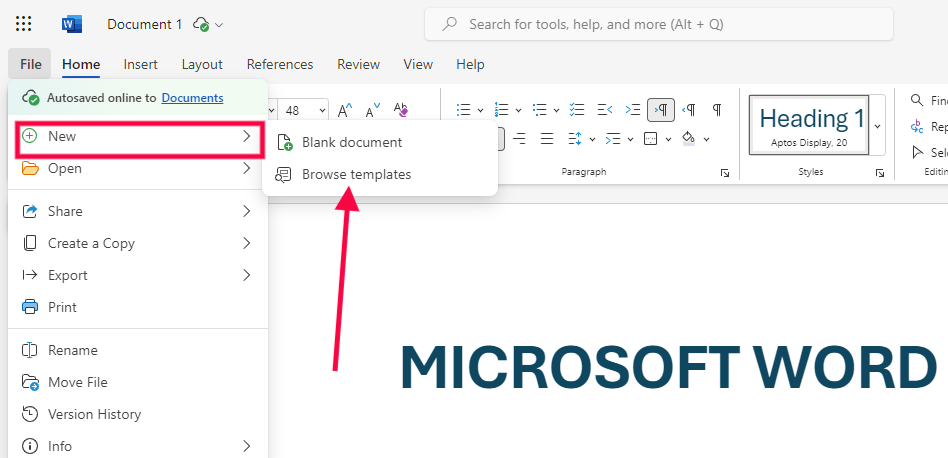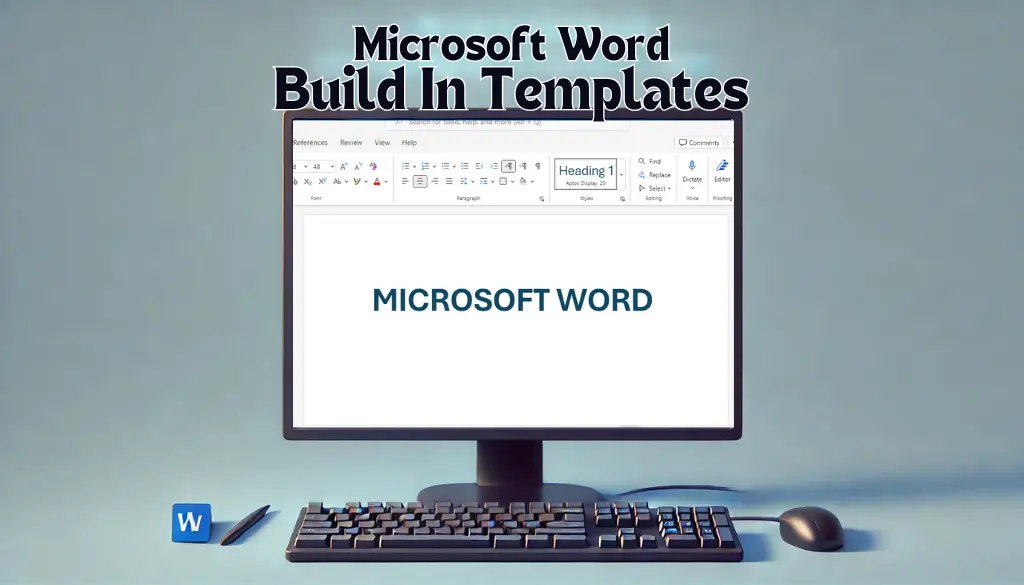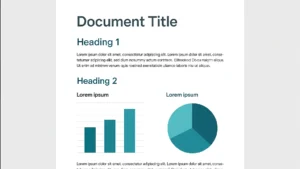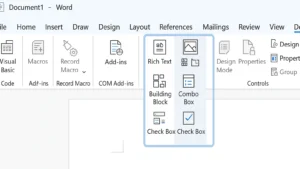Last Updated: August 8, 2025
If you spend hours formatting Microsoft Word documents from scratch, there’s an easier way. Microsoft Word’s built-in templates can help you create professional-looking documents without the extra work. In this blog, we’ll show you how to use Microsoft Word’s built-in templates to save time and create polished, amazing documents. From resumes to reports, these templates can simplify your work, make it more consistent, and help your documents stand out.
Table Of Contents
What Are Microsoft Word Built-In Templates?
Microsoft Word has many built-in templates that make creating documents much easier. For example, templates like resumes, invoices, and business letters are ready-made and easy to use, making them perfect for both personal and professional needs. A template is a pre-made document layout that includes the design, fonts, styles, and placeholder text that you can change. Whether you need to create a professional-looking resume, a flyer, or a formal letter, templates save you time and ensure your document looks great.
Why Use Built-In Templates?
- Save Time: Instead of spending hours making the perfect layout, you can start with a pre-made design and focus on your content. Microsoft says that using templates can cut document creation time by 50% (source: Microsoft Office Support).
- Professional Look: Templates come with professional styles, fonts, and layouts. You don’t need to worry about your document looking messy—with built-in templates, everything is already formatted.
- Consistency: If you use templates for similar types of documents, they will always have a consistent look, which is great for branding and keeping your work polished.
- Customizable: Microsoft Word templates can be fully customized. You can add your logo, change colors, or adjust the layout to fit your needs.
How to Access and Use Built-In Templates in Microsoft Word

Step-by-Step Guide
- Open Microsoft Word: When you open Microsoft Word, click on ‘File’ and then select ‘New’ to access a variety of templates. You’ll see a selection of templates available on the main screen, which you can browse or search for specific types like resumes or business letters.
- Browse Templates: You can scroll through the templates or type in the search bar for something specific, like “Resume” or “Business Letter.” Microsoft provides categories to help you find what you need easily.
- Select a Template: Click on the template you need, and then click “Create.” The template will open in a new document, ready for you to edit.
- Customize It: Replace the placeholder text with your content, add images, and adjust fonts and colors as needed. The template is now ready for you to make it your own!
- Save Your Work: Save the document as you normally would. If you want to use your customized version as a template in the future, save it as a “Word Template” file. This way, you can easily reuse it without having to redo all the formatting.
Popular Templates You Should Try
- Resume Template: Making a great first impression is important when applying for a job. Microsoft Word’s built-in resume templates provide a professional and clean layout, allowing you to highlight your skills and experience easily.
- Invoice Template: For small business owners or freelancers, invoice templates save time and provide a professional look for your billing.
- Business Proposal Template: When writing proposals, having a clear and attractive structure is important. Business proposal templates in Word make it easy to present your ideas in a way that grabs attention.
Frequently Asked Questions About Microsoft Word Templates
1. Are Built-In Templates Free to Use?
Yes! All built-in templates are free for Microsoft Word users. Just open the program, browse the templates, and pick the one that fits your needs.
2. Can I Customize a Built-In Template?
Absolutely! Built-in templates are fully customizable. You can change fonts, colors, layouts, and add images or logos to fit your needs.
3. How Do I Save My Customized Template for Future Use?
Once you’ve customized a template, go to “File” > “Save As” > “Word Template.” This way, you can use your personalized template again without starting from scratch.
4. Where Can I Find More Templates?
Microsoft Word also lets you download more templates from Microsoft Office Online. Just click “More Templates” when browsing the built-in options to find more designs.
5. Are Templates Available Across Different Devices?
Yes! Microsoft Word templates are available on the desktop version, as well as in Word for the web and the mobile app. This means you can start your document on your computer and finish it on your phone if needed.
Tips for Making the Most of Microsoft Word Templates
1. Choose the Right Template for Your Purpose
Always choose a template that matches your document’s goal. For example, a simple resume template might be better than a colorful one if you are applying for a formal job.
2. Customize for Your Branding
If you are using templates for business, always customize them to include your company’s logo, brand colors, and fonts to keep everything consistent.
3. Don’t Overcomplicate It
Remember, simplicity is key. Templates are made to save time. Try not to overcomplicate the layout or add too many extra features, as this can make the document look cluttered.
4. Save Your Favorite Templates
Save the templates you like and use often. This will help you quickly access the ones that work best for you without having to search each time.
Conclusion
Using Microsoft Word’s built-in templates can make your documents look great while saving you time. For example, using a resume template can help job seekers create a professional and visually appealing resume in minutes, making a great first impression on potential employers. Whether you need a resume, an invoice, or a report, there’s a template that fits your needs. Templates help you stay consistent, look professional, and work more efficiently. To learn more about using templates effectively, visit Microsoft’s official guide on templates. So, the next time you open Microsoft Word, try using the built-in templates—they might just change how you work for the better.






Pingback: OneNote Templates & Page Layouts: 10 Designs You'll Actually Use | MSW Tutor.
Pingback: Crafting Professional Newsletters in Word: Layout, Columns & Image Wraps | MSW Tutor.